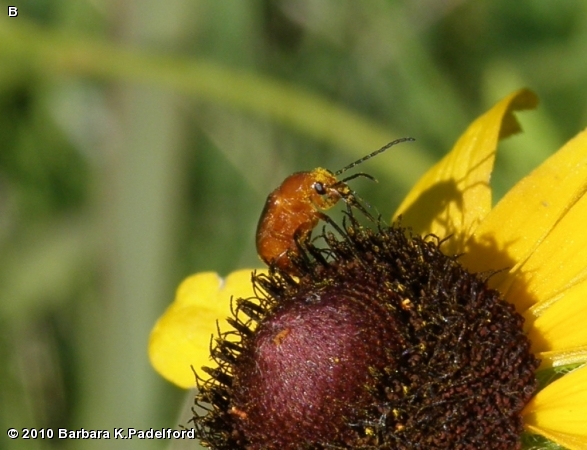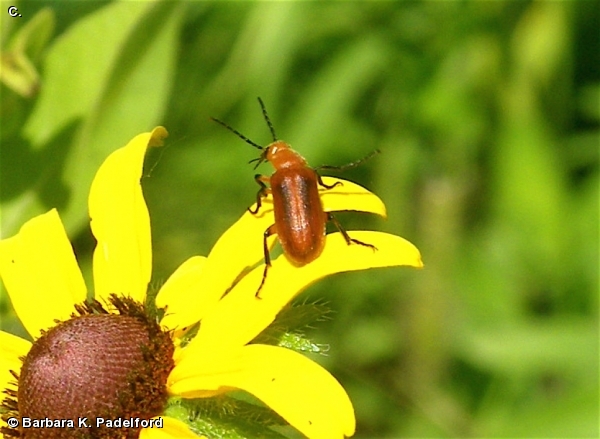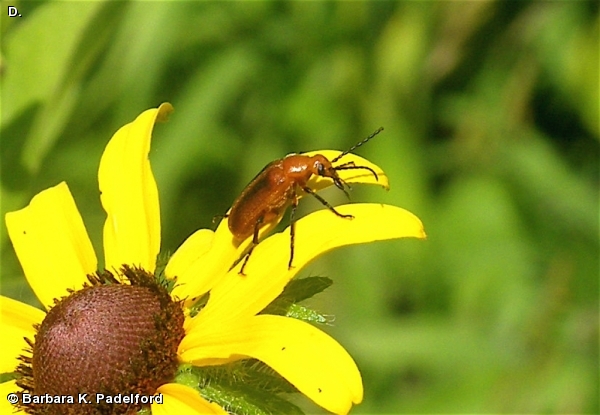
This is an orange-red beetle with black lines on the elytra. It ranges in size from ¼ to1/2 inch long. This beetle was identified with the aid of experts on buguide.net. This is a rather atypical blister beetle. In this genus, the mouthparts are formed into a long “tongue” for nectar feeding, sometime looking like there are three antennae.
This beetle was photographed at Camp Brewster. Its overall occurrence at Fontenelle Nature center is unknown. Blister beetle adults feed on leaves in the tops of plants but are especially attracted to flowers where they feed on nectar and pollen. These beetles are mid to late summer insects, active in mid-July and early August.
Blister beetles produce cantharidin, a poisonous substance comparable to cyanide and strychnine in toxicity. The substance, stored in the insects’ blood, is very stable and remains toxic in dead beetles. Animals may be poisoned by ingesting beetles while grazing or eating harvested silage. Cantharidin can also cause severe skin inflammation and blisters. Female blister beetles lay clusters of eggs in the soil in late summer. The small, active larvae that hatch from these eggs crawl over the soil surface entering cracks in search for grasshopper eggs. On finding a grasshopper egg mass, the larvae become immobile and spend the rest of their larval time as legless grubs. The next summer they pupate and soon emerge as adults. Blister beetle populations follow closely the abundance of grasshoppers from the previous year.
Disclaimer: The content of NatureSearch is provided by dedicated volunteer Naturalists of Fontenelle Forest who strive to provide the most accurate information available. Contributors of the images retain their copyrights. The point of contact for this page is: Eric Scholar.



